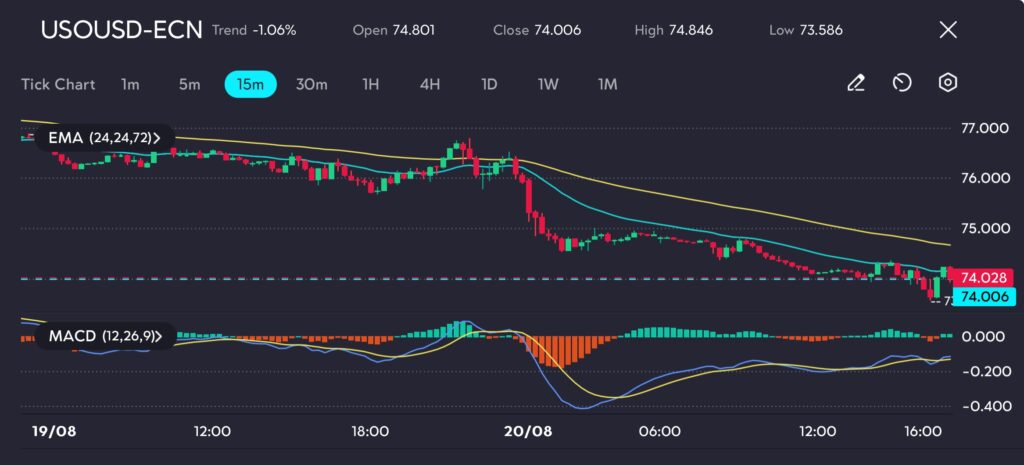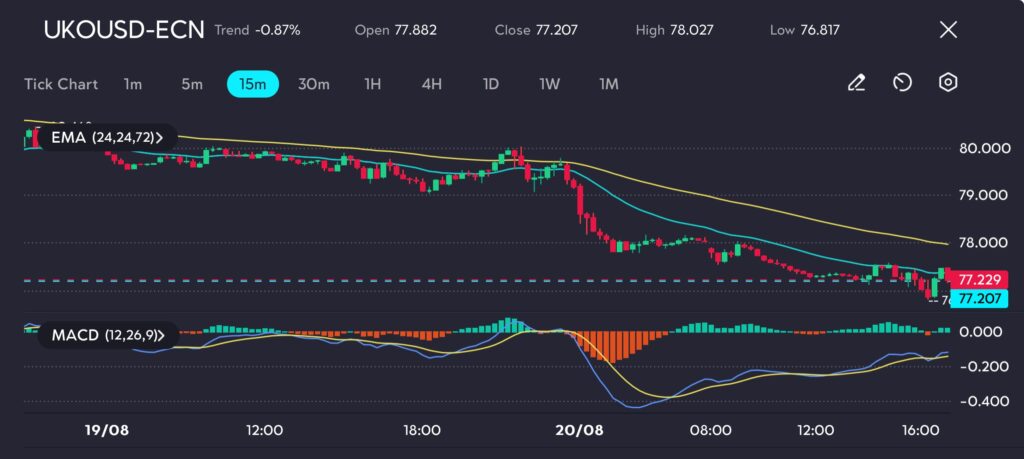Key Points:
- Brent crude oil dipped to $76.99 a barrel, while WTI crude oil fell to $73.75 a barrel.
- A ceasefire proposal in Gaza and weak Chinese economic data are contributing to the decline in oil prices.
This is a follow up article to: Oil prices pull back as OPEC cuts 2024 demand forecast
Oil prices edged lower as geopolitical tensions in the Middle East showed signs of easing, and concerns over weak demand from China persisted. Brent crude oil (Symbol: UKOUSD) was down, trading at $76.99 a barrel, while the West Texas Intermediate (WTI) (Symbol: USOUSD), saw a drop to $73.75 a barrel.


Pictures: Oil prices dip as geopolitical risks ease, as observed on the VT Markets app.
The recent drop in prices was driven by the news that Israeli Prime Minister Benjamin Netanyahu accepted a “bridging proposal” from the U.S. to address disagreements blocking a ceasefire deal in Gaza. This development has reduced fears of significant supply disruptions from the Middle East, a key oil-producing region.
Adding to the downward pressure on oil prices is the ongoing concern over the economic health of China. Weak data from the world’s second-largest economy, including a slowdown in industrial output and a significant drop in new home prices, have raised doubts about the country’s oil demand.
The recent figures indicate a further loss of momentum, adding to the existing worries about China’s impact on global oil demand.
Meanwhile, supply concerns have also eased slightly, with the Libyan Sharara oilfield ramping up production to 85,000 barrels per day, despite earlier disruptions due to protests. Additionally, U.S. crude oil stockpiles are expected to have declined by 2.9 million barrels last week, which could provide some support to prices.
Market outlook for the energy sector
The easing of geopolitical tensions in the Middle East could reduce the risk premium that has supported oil prices in recent weeks, potentially leading to further price declines. Additionally, the weak demand outlook from China may continue to weigh on the market, making it important for traders to monitor upcoming data releases closely, particularly from China and the U.S.
As part of risk management, traders should also keep an eye on the U.S. Federal Reserve’s interest rate decisions, as potential rate cuts could influence economic activity and oil demand.
However, with the market currently pricing in three rate cuts by the end of 2024, any deviation from this expectation could lead to increased volatility in the oil markets.









